The earliest photos of Florida will amaze you
The Sunshine State in black and white

The first modern photograph was produced in France in the 1820s. That same decade, on the other side of the Atlantic, the United States created the Territory of Florida. Photography didn’t become widespread in Florida for some decades, but when the Civil War struck in 1861, reporters raced to capture the conflict on film. Those wartime images are now some of the first photos we have of the Sunshine State – but there are plenty more that showcase Florida's fun side too.
Click through this gallery to see our collection of stunning 19th-century images capturing Florida’s earliest days…
1861: Confederate volunteers
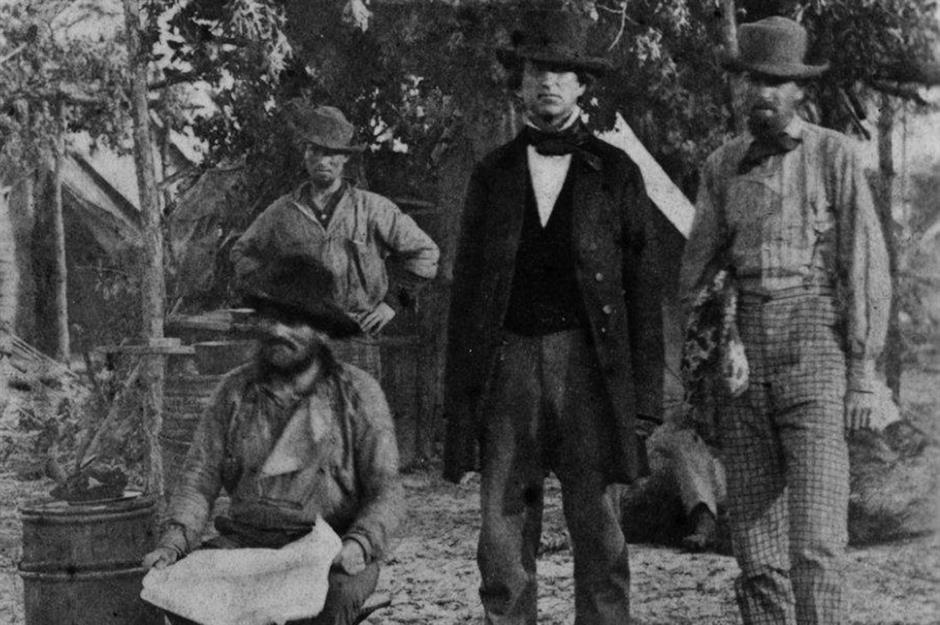
1864: Jacksonville signal tower
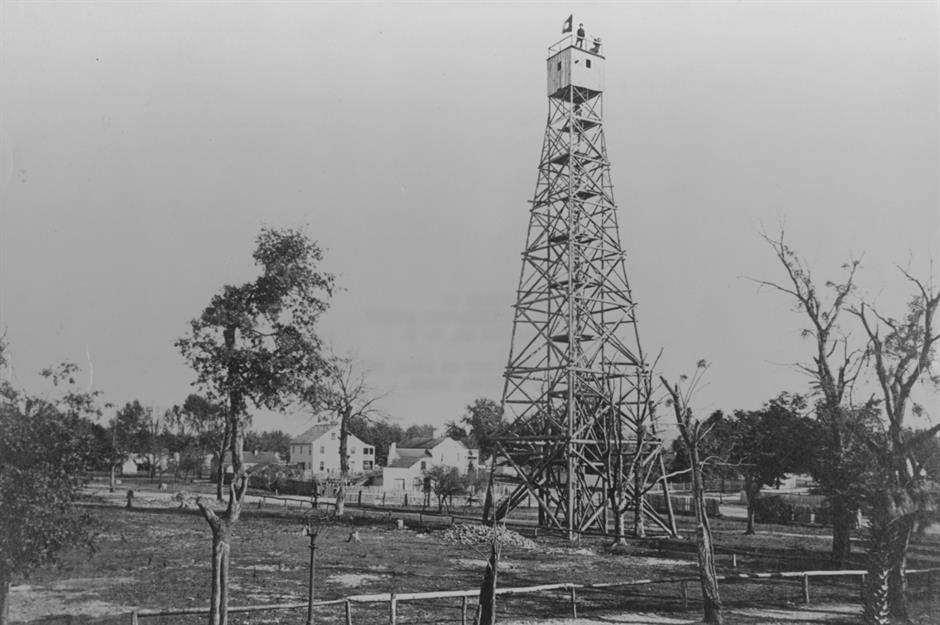
Even though the Union had mostly subdued Florida by 1864, troops still needed to be wary of a fightback from the Confederacy. Here, a 100-foot (30m) signal tower just outside Jacksonville communicated with a similar tower on the coast. If Confederate sharpshooters tried to pick off the signalmen, they could shelter in the enclosure just beneath the top until backup arrived.
1870s: reconstructing Florida
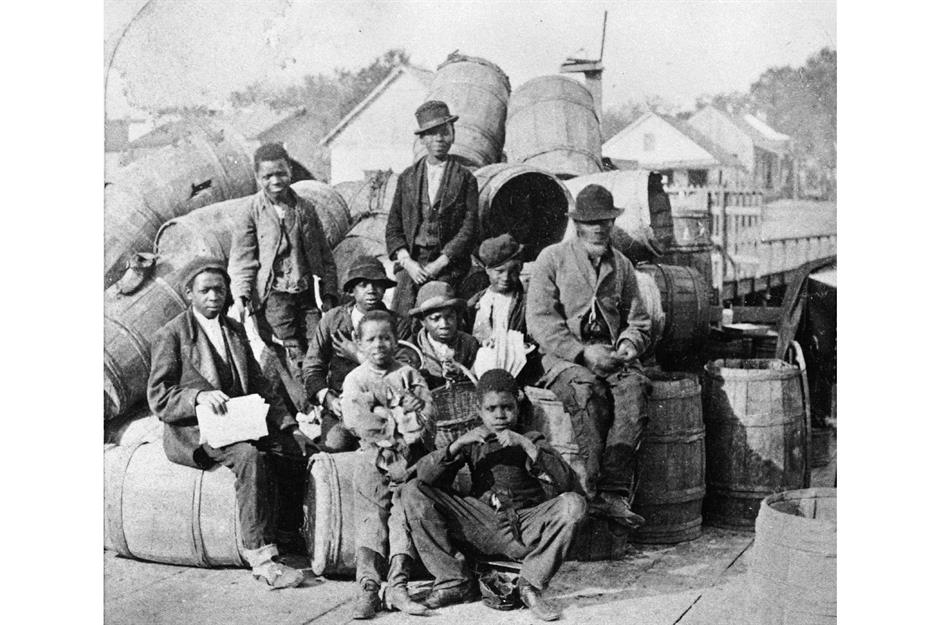
Florida wasn’t as ravaged as several other Confederate states, but the postwar years still saw a huge societal transformation as former enslaved workers were freed. Many former plantation workers were hired by their old owners and continued to work in the fields, but others sought a new life elsewhere.
1870s: The birth of tourism
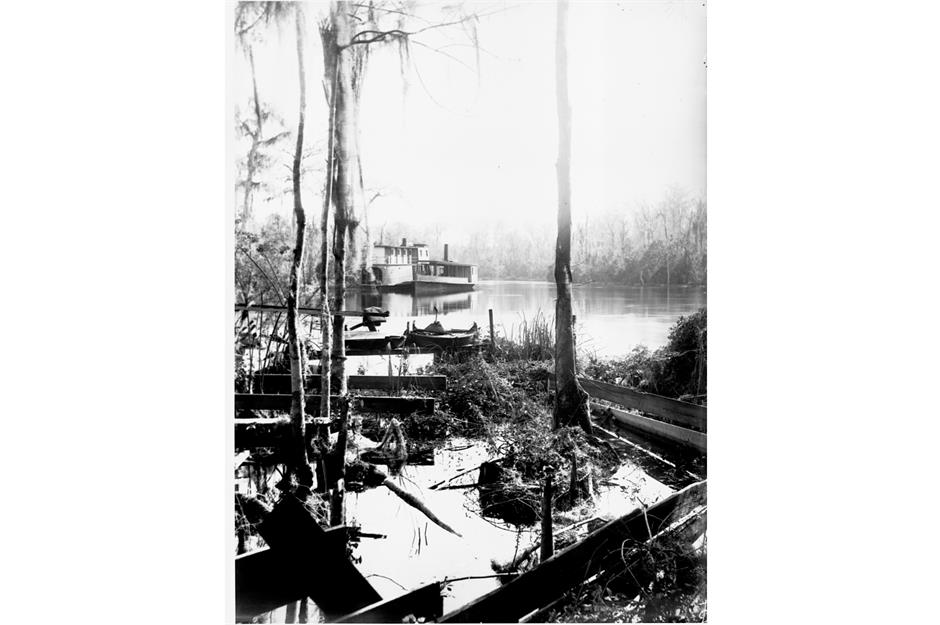
At a time when roads were slow and railroads were absent from Florida, boats were the preferred mode of transport – and the natural springs at Silver Springs, Ocala County made it the perfect staging post for merchants. They transported supplies and crops along the Silver and Ocklawaha Rivers by pole barge, but their tales of the region’s stunning wildlife soon drew visitors to the area too. As more and more travellers arrived, Silver Springs transformed into Florida’s first tourist attraction.
c.1875: Alligator hunting
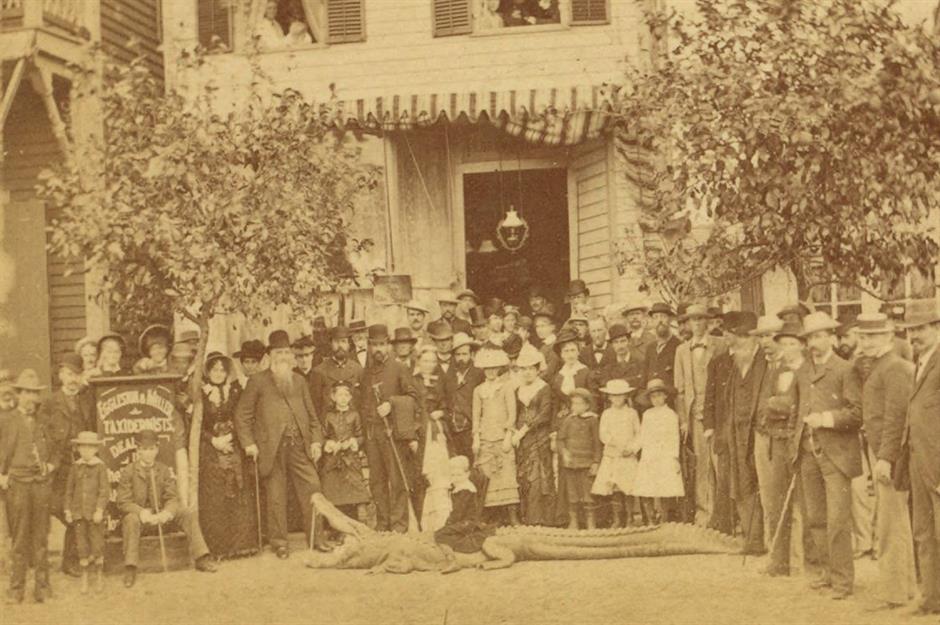
Part of the appeal of Silver Springs was the opportunity to witness alligators in their natural environment, although many early visitors came to shoot rather than observe. Steamship companies on the Silver and Ocklawaha Rivers advertised the opportunity to shoot alligators from their decks – and many hunters captured their most impressive kills on camera.
1875: Life in log cabins
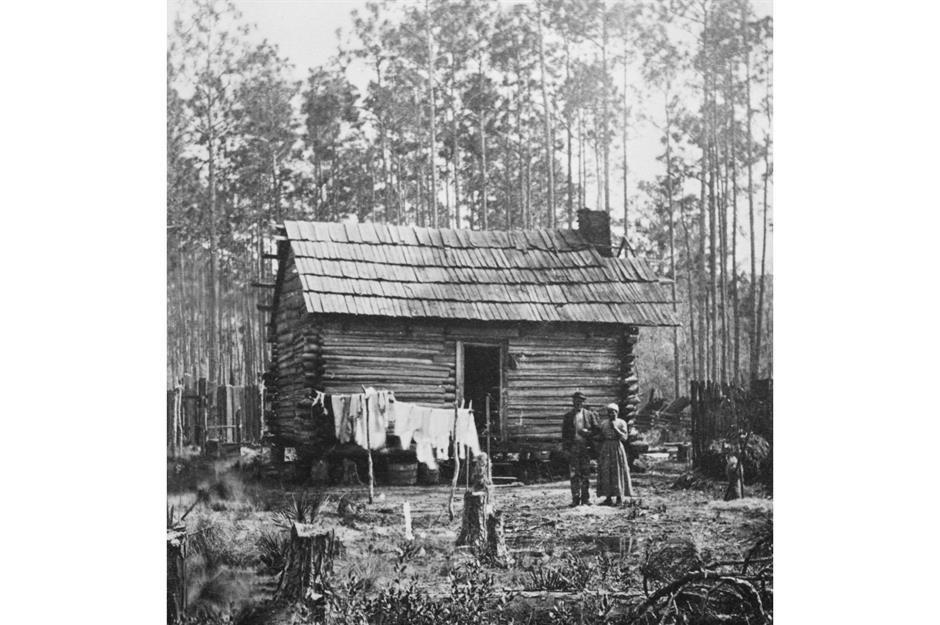
Those who lived away from Florida’s towns needed to be hardy and self-sufficient. Homes were generally one-room log cabins. Despite being constructed without glue, nails and mortar, these small cabins were as durable as the people that made them. Builders used notches to hold logs in place and filled in gaps with mud to create a surprisingly cosy (albeit rudimentary) home.
1880s: Jupiter Lighthouse

By the late 19th century, when this photograph was taken, the lighthouse at Jupiter Inlet was already more than a quarter-century old and James Armour had been head keeper for at least one – if not two – decades. He lasted more than 40 years in the job and witnessed the sleepy inlet transform into a major link in the transatlantic telegraph network, a coastguard station, a steamboat terminal and a stop on a railroad branch line.
c.1881: Harriet Beecher Stowe
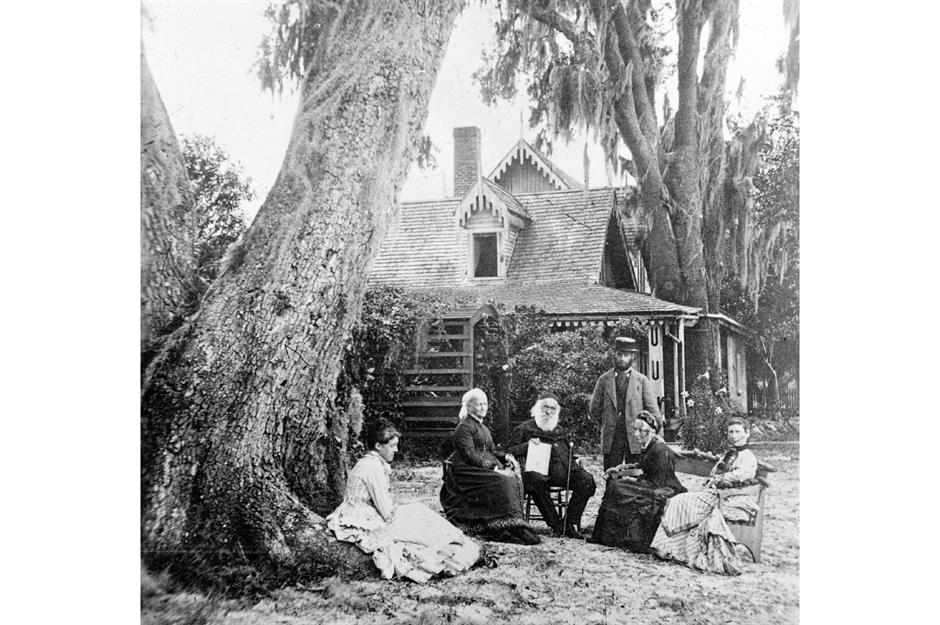
Thirty years before this photograph was taken, Connecticut author Harriet Beecher Stowe was catapulted to fame and fortune when her anti-slavery novel Uncle Tom’s Cabin was published. Two years after the Civil War came to an end, in 1867, she chose to spend her royalties on a summer house near Jacksonville – in the heart of the old Confederacy. Despite the recent conflict that had split the nation, Stowe declared that she never had an uncivil word with any Floridian. Many even travelled to catch a glimpse of the famous author on her porch.
c.1885: Florida’s first Black school
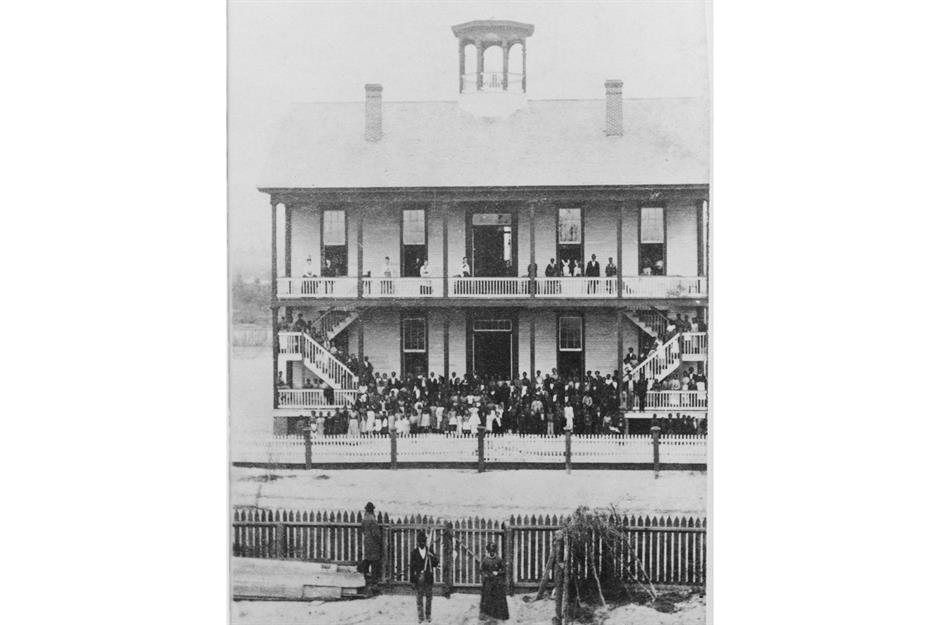
Jacksonville was the site of Florida’s first school for Black children, opened in 1869 and named after abolitionist politician Edwin M. Stanton. The original building burned down in 1882 and was rebuilt before this photograph of students and staff was taken. The second school building burned down too, and a third, thankfully fireproof iteration was constructed in 1917.
c.1885: Jacksonville cityscape
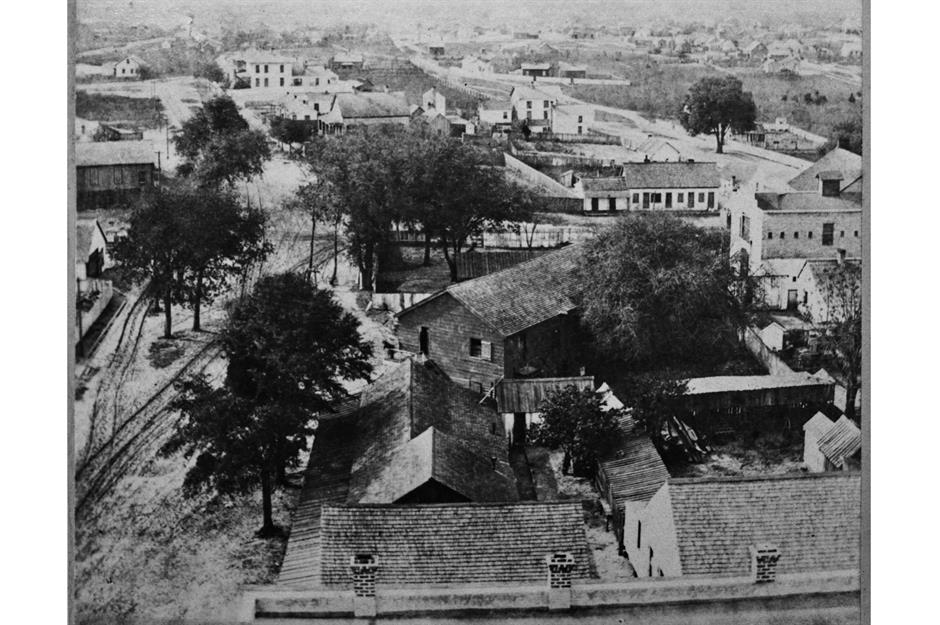
Now Florida's largest city proper with almost a million inhabitants (bigger cities like Miami are split into several incorporated territories), Jacksonville’s long history has seen it be part of the territory of the native Timucua people, the location of a French fort and the site of British and Spanish colonies. Eventually, the United States purchased Florida and renamed the settlement around the Spanish San Mateo Fort after President Andrew Jackson. At the time this photograph was taken, up to 70,000 people called Jacksonville home – mostly seasonal travellers from the north looking to escape from harsh winters.
c.1885: Palatka
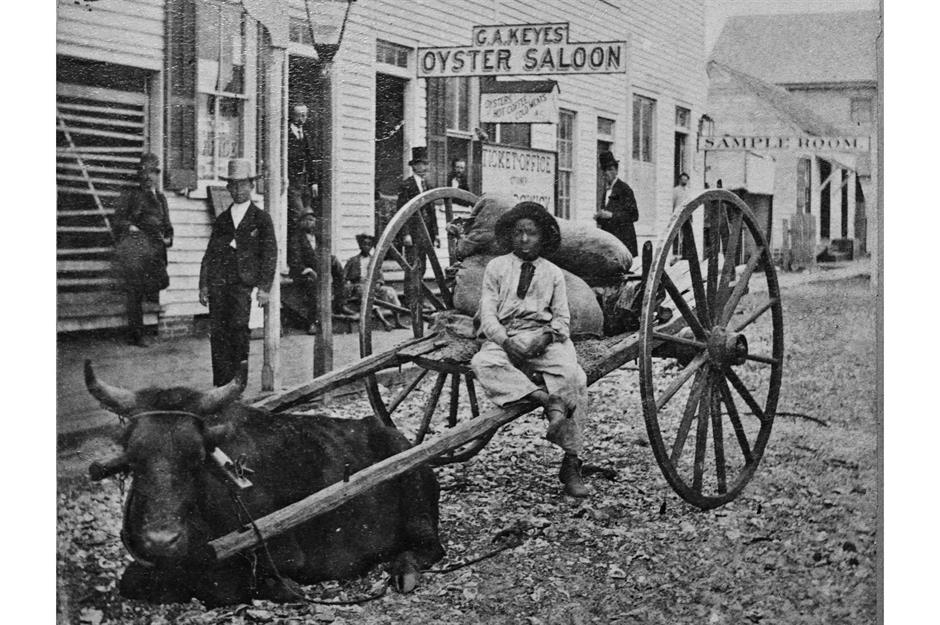
Whereas Jacksonville is officially Florida’s biggest city, nearby Palatka has just 10,000 inhabitants – but when this photo was taken, it rivalled Jax as the most important port on the St Johns River. Seven steamboat lines operated out of the town, and wharves lined the riverfront to load fruits from the many local citrus plantations. However, a huge fire wiped out most of Palatka’s downtown around the time that this ox-pulled cart and driver were captured on film, and merchants soon moved their business downriver to Jacksonville.
1886: Paddle steamers and railroads

The growth of Silver Springs as a tourist destination soon had entrepreneurial locals vying for a piece of the action. Steamboats raced along the river packed with tourists, and the coming of the railroad around 1879 meant that there was even more competition for steamboat fares. Once the visitors arrived at Silver Springs, tour operators jostled for their share of the tourist dollars. Two enterprising boatmen fixed a piece of glass to the bottom of their rowboat to give tourists a better view of the aquatic wildlife and began offering the world’s first glass-bottomed boat ride.
1889: Hotel Alcazar
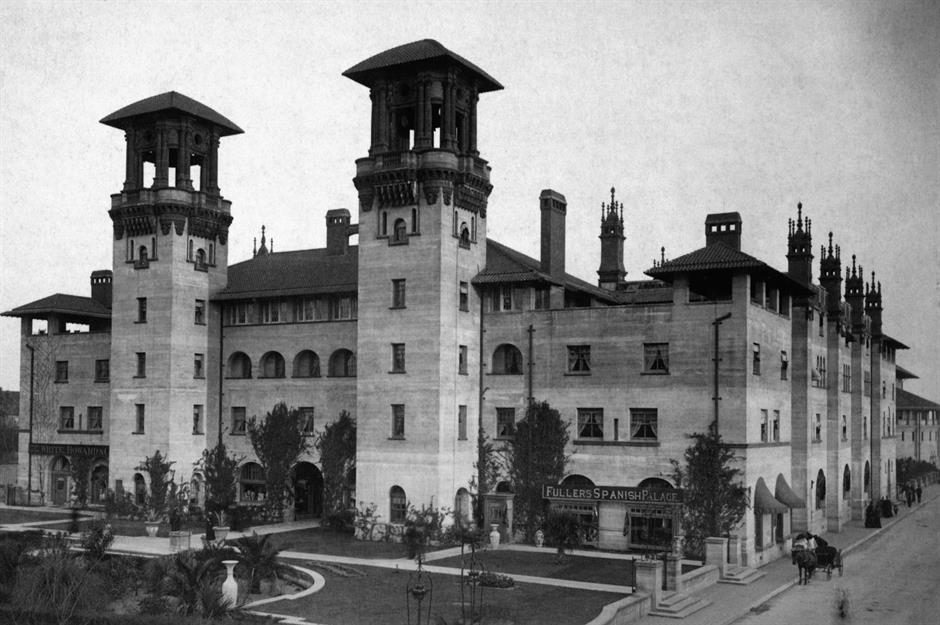
American industrialist Henry Flagler made a fortune through Standard Oil. He used his wealth to embark on a new project: building a railroad down Florida’s east coast. To attract passengers to use his line, Flagler built enormous resort hotels near his stations. The Hotel Alcazar in St Augustine, pictured here, was one of America’s first multi-storey poured concrete buildings. It opened only during the winter season and enticed high-society guests from the cities of the northeast to come and spend a few weeks enjoying Florida’s year-round sunshine.
c.1889: Taking a dip
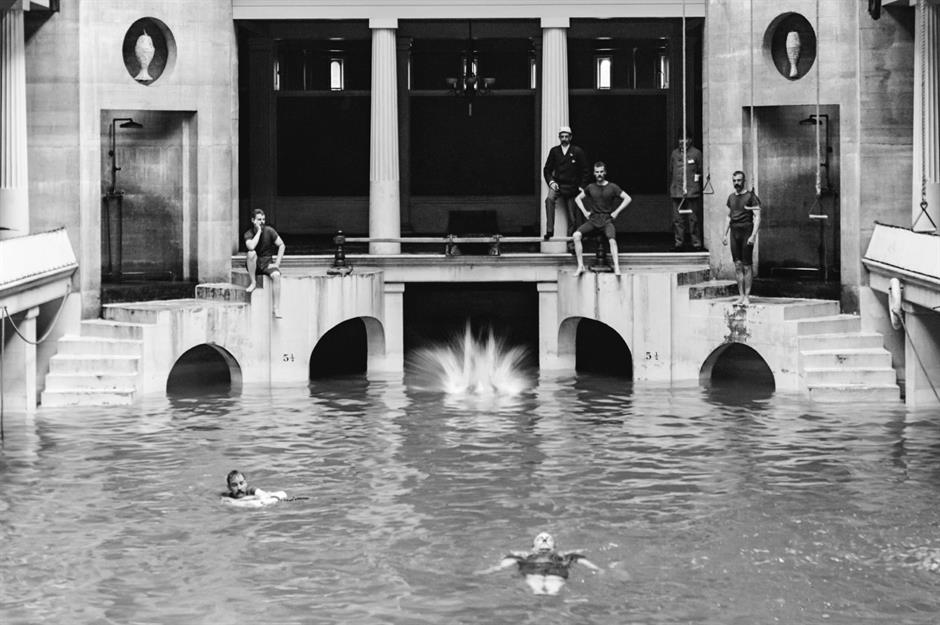
Visitors to Florida’s new resort hotels mingled on the sunny verandas by day and partied in ballrooms at night. They also took advantage of the grand facilities on offer. The Hotel Alcazar in St Augustine contained a casino, a bowling alley and this enormous indoor pool. It wasn’t just Florida’s first indoor swimming pool, but the largest indoor pool in the world.
1890s: Sailing on sand

Most visitors to Florida enjoyed a simple stroll on the sand or a dip in the waves, but some thrill-seekers made use of an unusual beach activity that was especially popular at Ormond Beach and Daytona Beach. Sail bikes like this custom-built rig gave guests a chance to race along the sand. Other sail bikes were ordinary-looking bicycles with a sail attached for extra speed.
c.1890: Roadbuilding
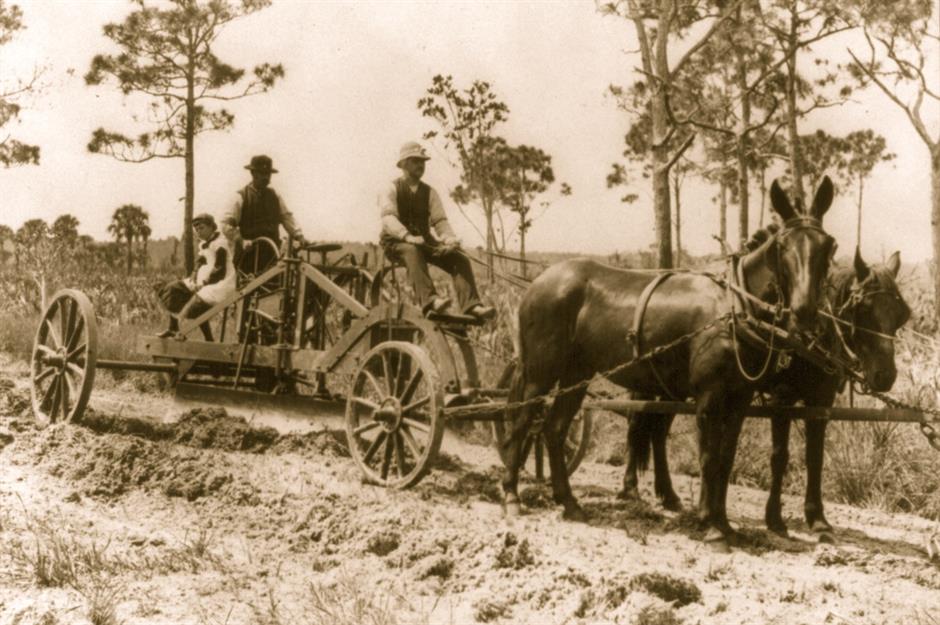
These workers may look like they’re pulling a plough across a rutted field, but they’re actually building a road. Before automobiles hit America, roads tended to be little more than rudimentary tracks maintained by local people. During the wet season, they often became impassable thanks to thick mud and flooding. Nevertheless, roads were a lifeline to remote inland communities that were otherwise cut off from their neighbours.
1890: Phosphate miners
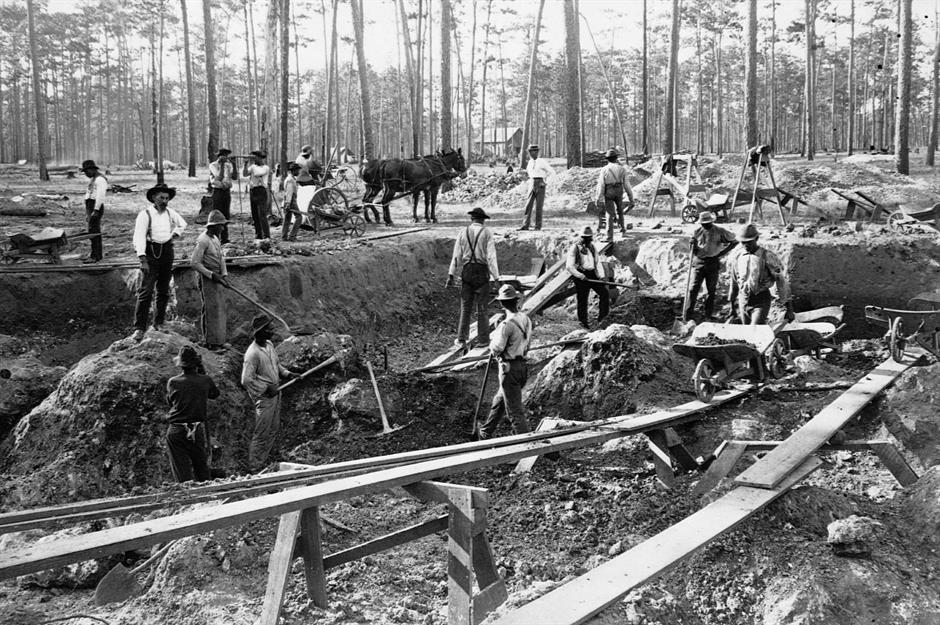
A new industry arose in the 1890s, when outcrops of phosphate rock were discovered in Central Florida. The rock could be broken down and used for fertiliser and animal feed, and the deposits in Central Florida were higher quality than most others in the US. The lucky owners of phosphate-rich land formed companies to take advantage of the natural bounty, digging mines like this one outside Ocala. The first phosphate mines were labour intensive, but mechanisation soon meant that enormous quantities of rock were being excavated every day.
1890: Life saving
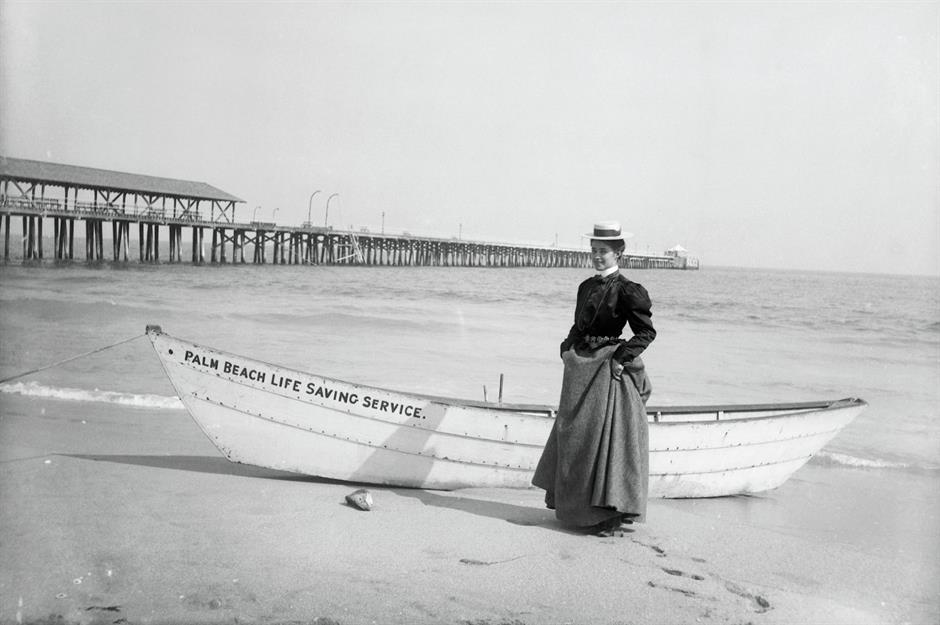
The US Life Saving Service was formed in the middle of the 19th century with the aim of saving sailors in distress, but its primary function evolved as the tourism industry grew. By the end of the century, lifesavers kept a close watch on Florida’s increasingly busy beaches, using dories like this one on Palm Beach to reach swimmers in distress.
1894: A sweet harvest
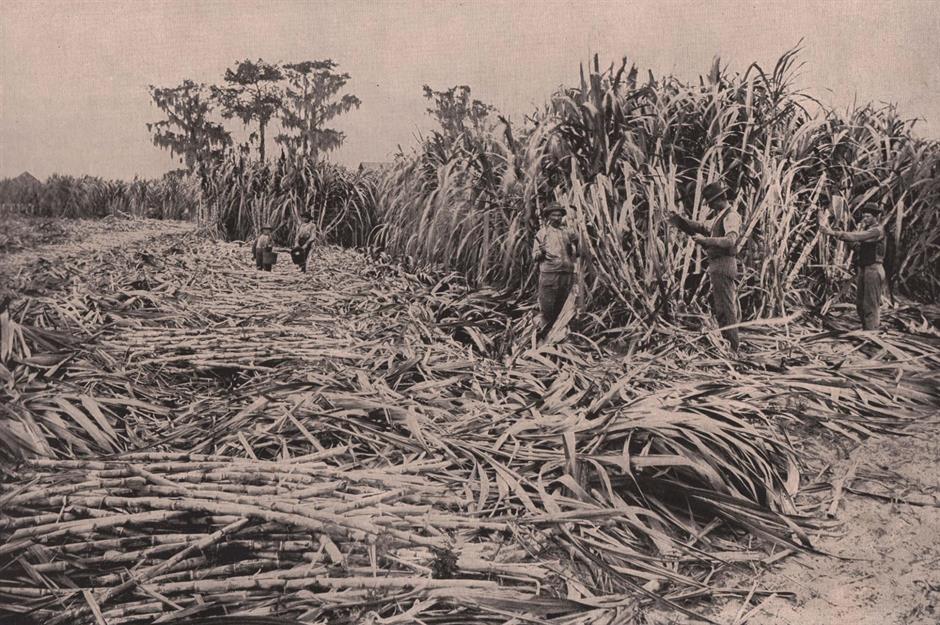
Florida may produce half of America’s home-grown sugarcane today, but the Sunshine State hasn’t always had a sweet tooth. Sugar production almost died out in the late 19th century as farmers battled unpredictable frosts that could ruin an entire crop. But production soon bounced back, with plantations centred south of Lake Okeechobee. As can be seen in this photograph, harvesting a sugarcane field was a daunting job that had to be carried out by hand.
1895: Teeing off
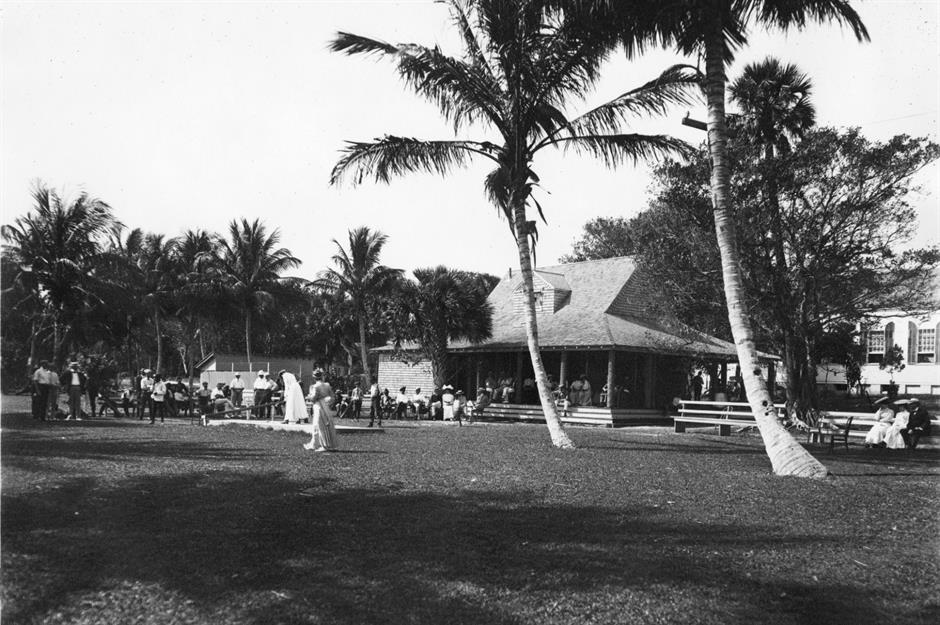
Floridians were introduced to golf by Scottish immigrant John Gillespie in 1886, who built a two-hole course on his land in honour of his homeland’s favourite pastime. As golf’s popularity grew, hotels built small courses in their grounds to cater to the demand. This driving range at the Palm Beach Inn (now The Breakers) was the forerunner of Florida’s first 18-hole course, which would be constructed by hotel management two years later.
c.1895: America’s southernmost city
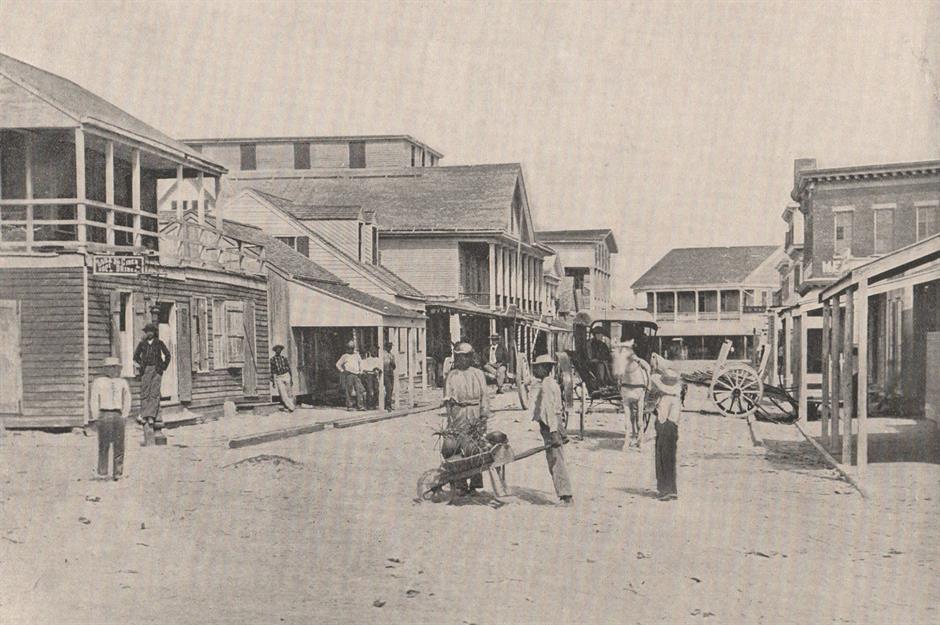
Key West, on the islands off Florida’s southern coast, came to prominence on the back of a competitive trade: wrecking. The Gulf of Mexico’s changeable weather and rocky outcrops claimed as many as one ship per week, and wreckers raced each other to loot the lost cargos. At one point in the early 19th century, Key West was the wealthiest city in the US per capita, although improvements to maritime charts meant that wrecking was a dying trade by the end of the 19th century.
1895: The Old City
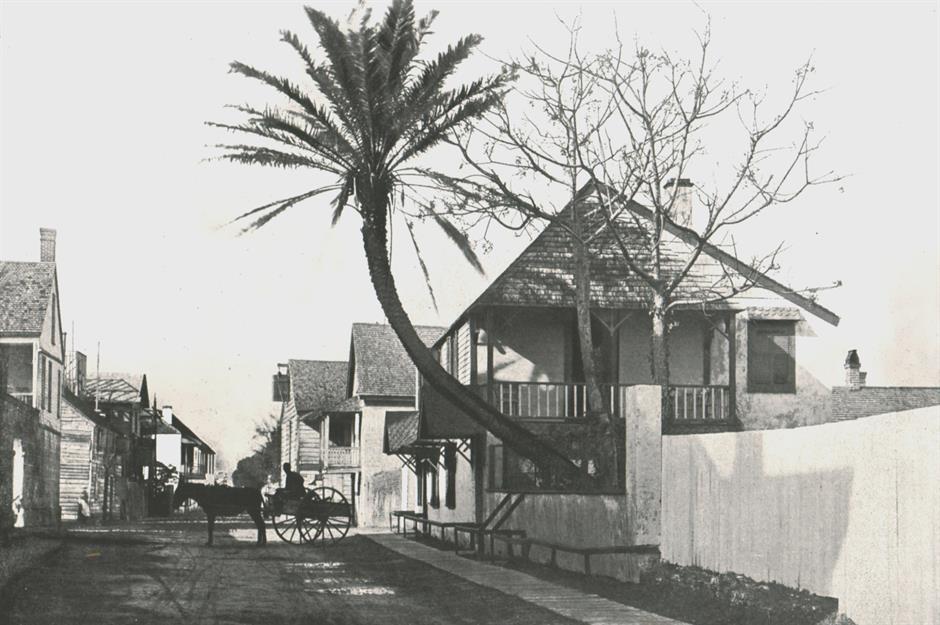
Founded in 1565 by Spanish colonists, St Augustine is the United States’ oldest continuously occupied city. Its earliest buildings have long gone, but a few relics survive from the 1700s. This photograph was taken on Francis Street and depicts the oldest house in the area, dating to the early 18th century and once belonging to a Canary Islander who worked as an artilleryman. When this photo was taken, the house was already over 150 years old.
1895: Relaxing on the veranda

The Royal Poinciana Hotel in Palm Beach had just 17 guests booked in on opening night, but many more were soon on the way. The hotel had a capacity of 1,000 guests and three miles (4.8km) of corridors, and since telephones were still in their infancy, messages were carried by bicycle. These lucky guests, pictured a year after the Royal Poinciana opened, are taking advantage of the shaded verandas. They also had daily orchestral performances and could join fishing excursions into the Atlantic.
1895: Steamboat on the Ocklawaha River
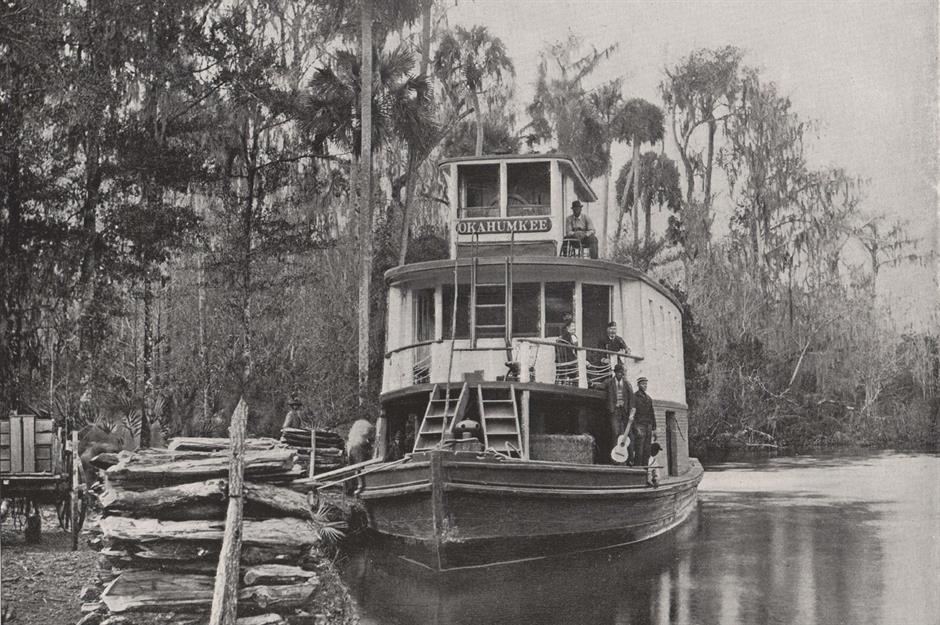
The Okeehumkee was one of several paddle steamboats that sailed along the Ocklawaha River. Like many of Florida’s river steamers, the Okeehumkee had a livestock pen and a cargo hold to service residents who lived along the river banks. Most of its passengers were tourists, however. Among those who journeyed along the Ocklawaha were Ulysses S. Grant and Thomas Edison. Okeehumkee eventually stopped sailing in 1919, having spent 43 years in service.
1897: Loading oranges
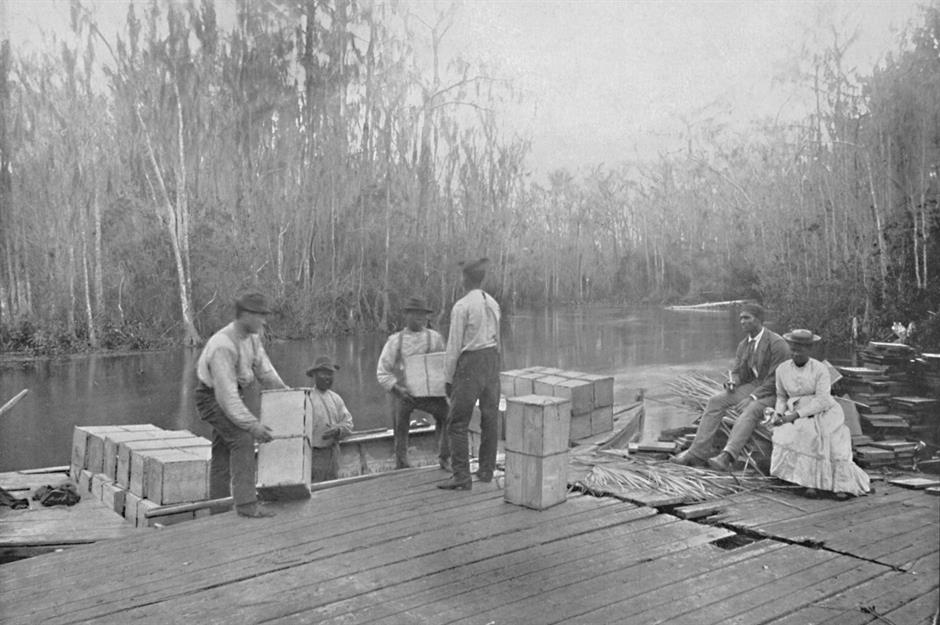
These workers are loading crates of oranges onto an Ocklawaha River barge, but the photo captures a snapshot of the citrus industry around the time of its lowest ebb. In 1894 and 1895, unusually harsh frosts wiped out almost every orange grove in central Florida. Many citrus farmers abandoned the industry, but a few stuck it out. They moved to the warmer southern tip of Florida and reestablished themselves there.
1896: Welcome to Miami
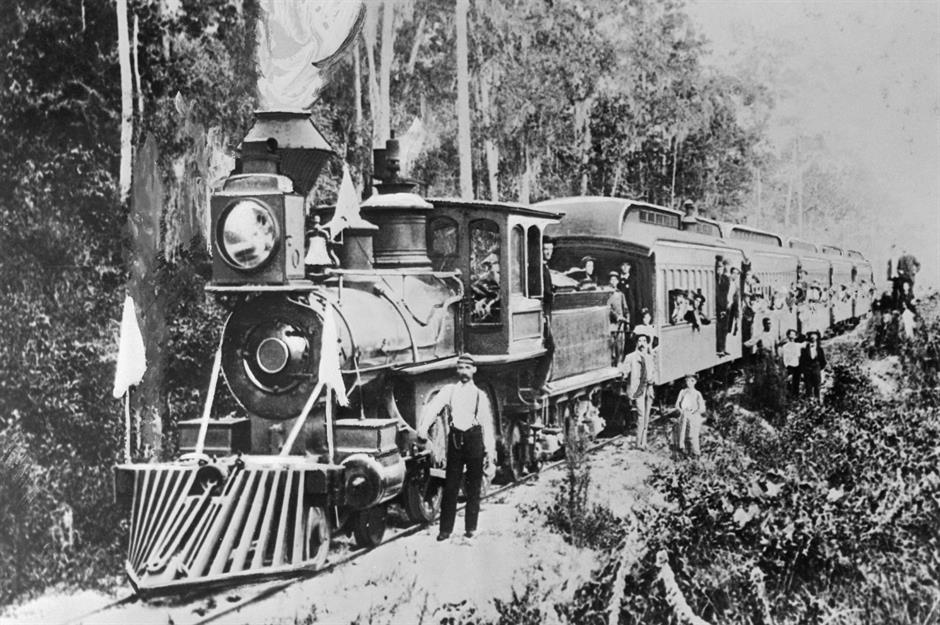
Miami was a sleepy fishing village with a population of just 300 when industrialist Henry Flagler saw its potential, spurred on by enterprising landowner Julia Tuttle. He extended his East Coast Railway 75 miles (120km) south from Palm Beach to make Miami its new terminus, and this train was one of the first to steam into Miami station. The influx of passengers kickstarted Miami’s rapid growth into one of America’s most popular vacation destinations.
1897: The Treaty Oak
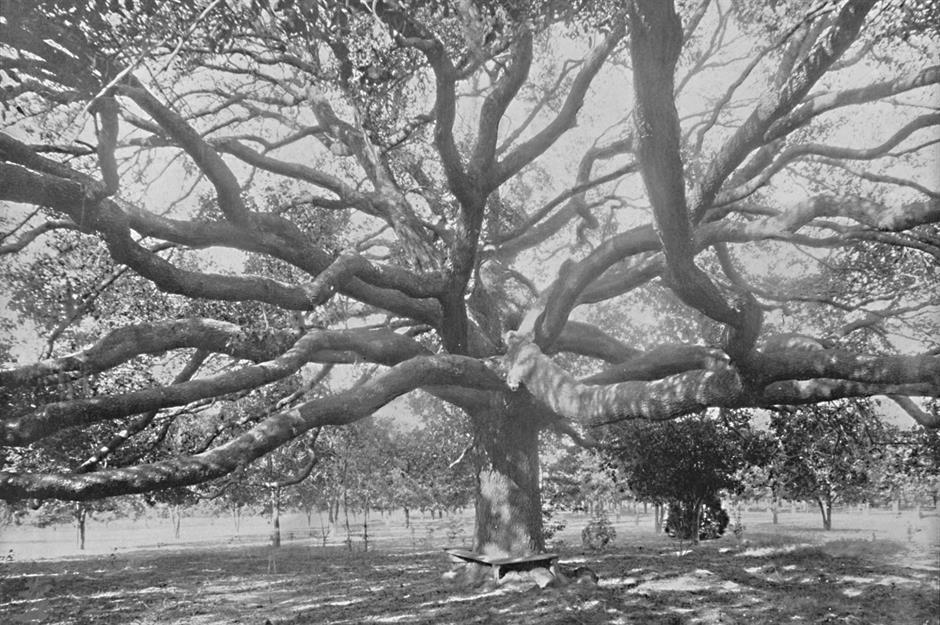
Fake news isn’t just a 21st century invention. This live oak in Jacksonville was already an ancient specimen when this photo was taken, and it came under threat when developers wanted to chop it down ahead of construction work in the 1930s. To rescue it, a local reporter spun a tale that Spanish settlers had signed a treaty with Indigenous tribes under its branches. The 'Treaty Oak' was saved thanks to its important place in history – and a benefactor who purchased the land around the tree to stop it being developed. It was only years later that the reporter confessed that he'd made the whole thing up.
1898: Spanish-American War
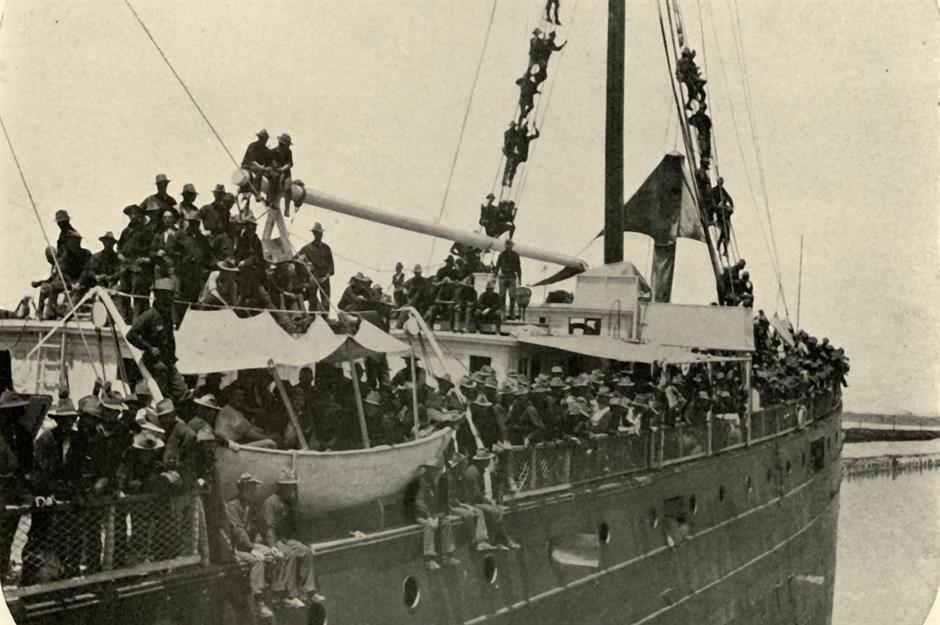
The United States established itself as the predominant power in the western hemisphere when it intervened in the battle for Cuban independence. In just two months, American troops forced the Spanish to surrender in Cuba – and since Cuba was little more than 90 miles (145km) from Key West, Florida was an important staging post for the American armed forces. Here, the transport ship Rio Grande backs out of Port Tampa, carrying cavalry and a balloon observation crew (an early form of aerial surveillance).
c.1900: Key West’s sponge market
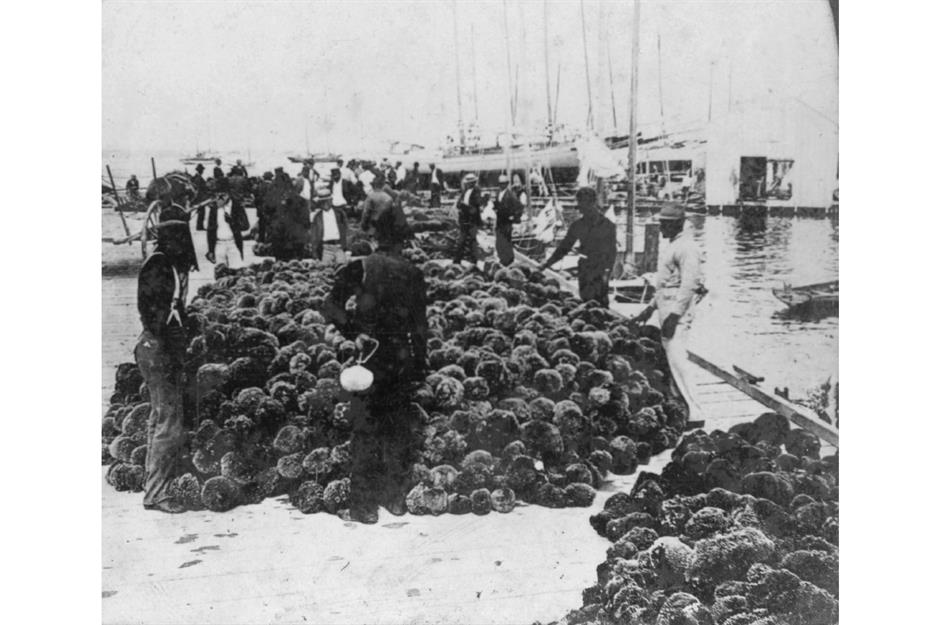
After the decline of the wrecking industry, the island city of Key West shifted tack and began to harvest an unusual crop: sponges. By the 1870s, many locals had set up as maritime farmers. They collected high-quality sponges from the Gulf of Mexico, dumping them on the dockside ahead of the daily market. Merchants selected the pick of the crop and shipped them north to cities like New York, where Key West sponges were known as the best in North America.
1900: Miami
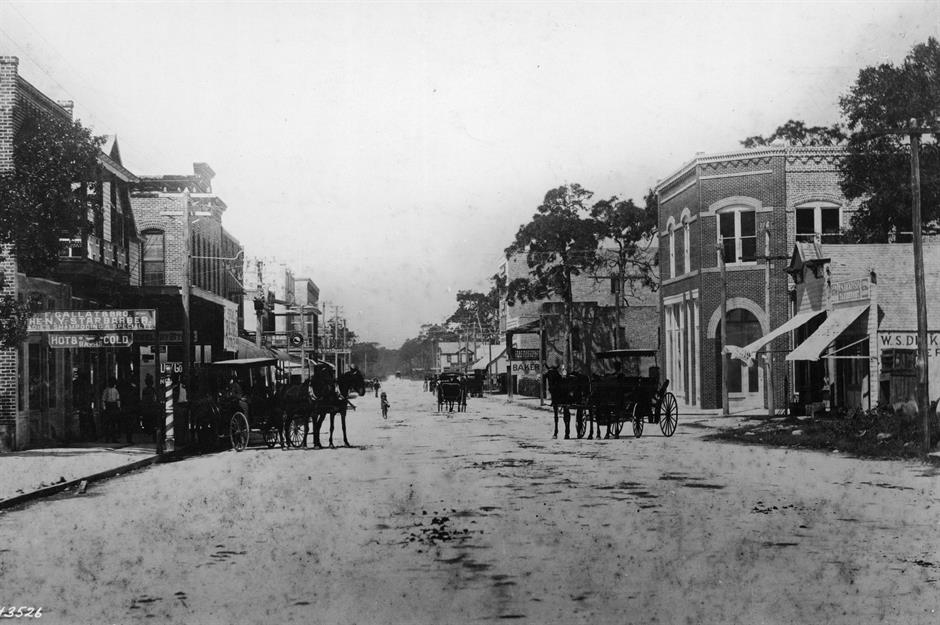
The extension of the East Coast Railway to Miami caused a real estate boom and an influx of settlers. The initial newcomers lived in tents and rudimentary housing, but within a few years Miami’s first streets had taken shape. Pictured here is 1st Avenue. Some of the city’s first buildings were surprisingly large: the Royal Palm Hotel opened in 1897 with 450 guest rooms – an impressive achievement, since Miami’s permanent population was still very modest. But Miami and the rest of Florida would soon undergo rapid growth, transforming into the Sunshine State we know today.
Comments
Do you want to comment on this article? You need to be signed in for this feature